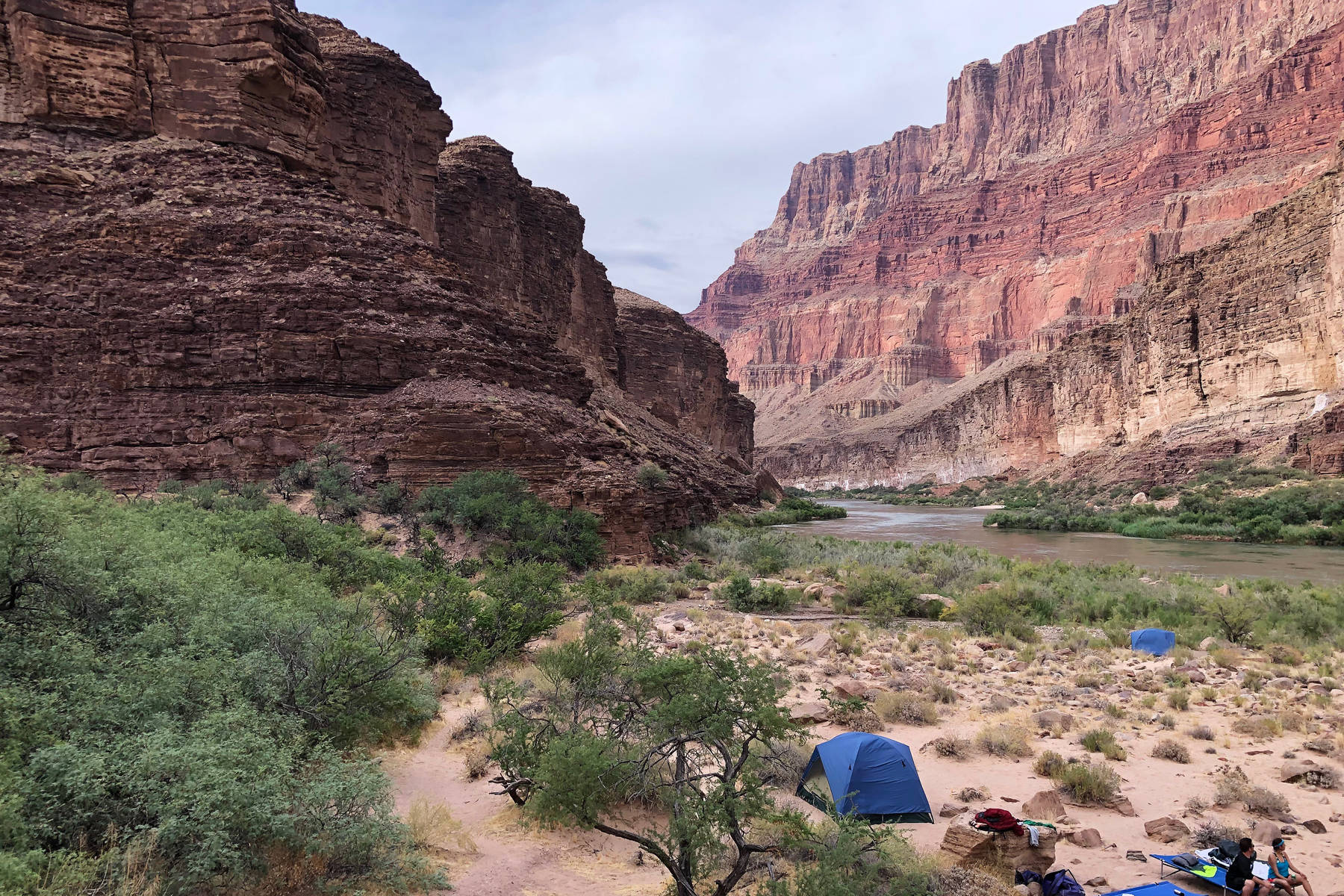My heart will always live in Alaska. It’s where I’ve spent most of my life, growing up among the Chugach Mountains where beauty and majesty reign supreme.
So it is on that note that I start this column by shifting attention away from this beautiful state and down to sunny Arizona.
Rafting 187 miles through the Grand Canyon will give you two different perspectives on wilderness trekking and camping. Growing up in Alaska, there are certain guidelines that must be respected and followed in order to enjoy a backcountry trip. The land will show you no mercy when the wind picks up and weather moves in on what used to be a sunny day.
Arizona, and the Grand Canyon in particular, uncovers a different reality. On a recent five-day trip down the river in motorized rafts, instead of packing a bag of clothes meant to keep me warm, I brought only a few pairs of shirts and shorts meant to dry quick and keep me cool.
The Alaskan motto goes something like, “There is no bad weather, only bad clothing,” so that’s why I’ve had it ingrained in me to bring warm socks, noncotton shirts, gloves, headwear and anything else that would come in handy should the need for it arise.
I’m talking about sudden weather fronts that bring cold and snow. I’ve had it happen to me in the Chugach and in the Kenai mountains (an oncoming blizzard while hiking up Slaughter Ridge and the fierce winds hiking atop Cecil Rhode mountain have taught me a lot).
Down in the depths of the canyon where the Colorado River flows relentlessly, it was hot. I mean real heat. Stepping off the rubber rafts and onto a sand bar for lunch will deliver a blast of heat not that different from the feeling of sticking your hands in a convection oven at home.
I quickly learned methods to beat the heat. During the day it wasn’t too bad when you’re on the river and the cool rush of air coming off the water envelops you (it also creates a very intriguing phenomenon where the air is noticeably cooler just a few feet above your head).
The hardest deal is trying to fall asleep on a windless night when the night air still hovers in the 90s. The trick to staying cool and falling asleep? Soak a cloth or clothing item in the river just before settling down and place it on your chest. I didn’t figure out this particularly nifty trick until the final two nights, but it saved my sanity at the end.
So instead of spending a week taking care to not get wet and cold, I found myself jumping into the river in attempts to keep my body core temperature down. Even when our crew did run into a classic canyon monsoon season shower, the rain was a welcome relief.
The canyon also harbors no threatening predators, which meant sleeping in open air with no cover, with only an awe-inspiring tapestry of stars above, was practical. In Alaska, sleeping out in the open doesn’t even register as an option. If a bear doesn’t get you, the mosquitoes certainly will.
Another lesson is that the call of the wild wasn’t exactly that. Every morning at 5:30 a.m., the already-sweltering air would be pierced by, “Hooooot Cooooffeeee!” which would provide enough motivation to rise like a zombie out of a deep sleep.
The Colorado River in all its might and glory is a behemoth. It carries an average of 22,500 cubic feet per second down its length of 1,450 miles, beginning from its headwaters deep in the Rocky Mountains to its delta at the head of the Gulf of California.
That sheer amount of water also allowed our group to take bathroom breaks in the river (No. 1, that is). It made for a few lighthearted moments as I waded out into the water to do my business with my mom or sister standing there. When you’re belly-button deep in the cool Colorado current, who’s to say what you’re actually up to?
The current also allowed for a bit of fun during the trip when the guides pulled over for a quick hike at the confluence of the Colorado and Little Colorado rivers. The Little Colorado exhibits a spectacularly bright blue hue before joining the main Colorado, and with the adjacent green color of reeds on the bank and the towering brown and red columns of the canyon walls above, it made for a technicolor scene straight out of the Land of Oz.
The Little Colorado was shallow enough to swim in, and swim we did. By moving our life vests to our legs, straddling the PFD as if it were a diaper, the group was able to safely glide down a rapids section on our bottoms as if were a Slip ‘n Slide. Talk about seeing 20-plus adults briefly morph into a bunch of kids enjoying a summer heat wave.
Now, back in Alaska, where 75 degrees doesn’t seem too bad, the realization sets in that I could only handle about five days at a time of that epic country down there. Alaska provides its own grand stature with its mountains and glaciers, but mark my words: I’ll be back someday.

